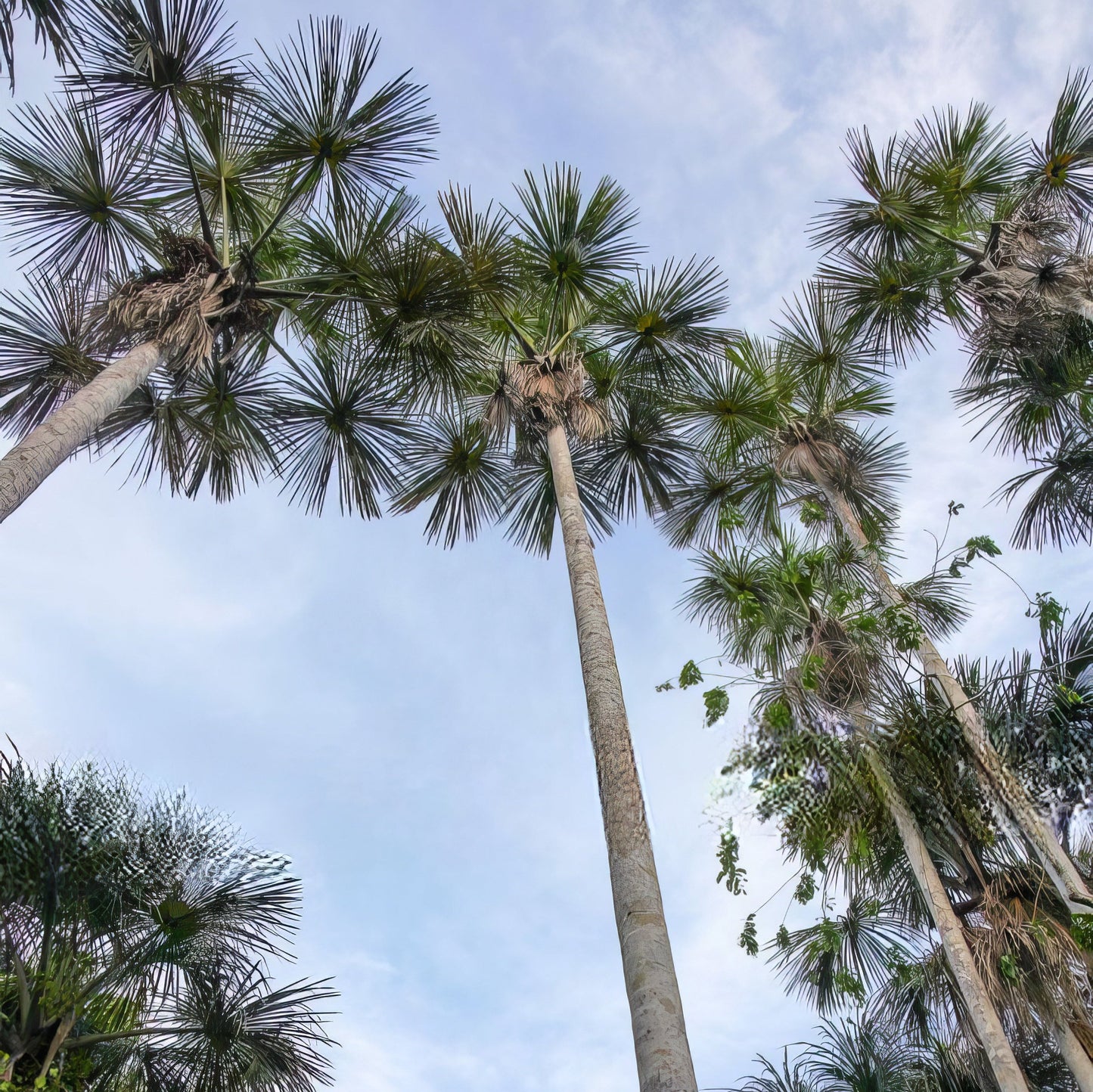VIRIAR
Mauritia flexuosa - Morete Palm - 3 x seeds fresh seeds
Mauritia flexuosa - Morete Palm - 3 x seeds fresh seeds
Couldn't load pickup availability
Plant Description
Name: Mauritia flexuosa
Common Name: Aguaje Palm, Buriti Palm, Moriche Palm
Mauritia flexuosa, commonly known as the Aguaje Palm, Buriti Palm, or Moriche Palm, is a significant palm species native to the tropical rainforests and swamps of the Amazon Basin in South America. This species belongs to the Arecaceae family and is noted for its ecological and economic importance in its native habitat.
The Aguaje Palm is a large, solitary palm with a stout, tall trunk that can reach up to 25 meters (82 feet) in height. The trunk is often covered with a distinctive pattern of rings or scars from fallen leaves. The palm features a crown of large, feather-like leaves that are pinnate, with leaflets arranged in a graceful arch. The leaves are typically bright green and can grow up to 3 meters (10 feet) long.
In late spring and summer, Mauritia flexuosa produces clusters of small, yellowish flowers that develop into round, orange to reddish fruits. These fruits are edible and are highly valued for their nutritional content. They are rich in vitamins A and C and are commonly consumed in various forms, including juices and desserts.
The Aguaje Palm is well-adapted to swampy or waterlogged conditions, thriving in both flooded and dry periods. It plays a crucial role in the ecosystems it inhabits, providing food and habitat for a variety of wildlife.
Cultivation of Mauritia flexuosa
Conditions:
- Light: Mauritia flexuosa thrives in full sun but can also tolerate partial shade. It requires bright light to grow well and produce its characteristic fruits.
- Temperature: This palm prefers tropical climates and is suited to USDA hardiness zones 10-11. It is sensitive to frost and should be protected or grown in a frost-free area.
- Soil: The Aguaje Palm prefers wet, well-draining soils. It is adapted to swampy or waterlogged conditions but can also grow in drier soils if well-watered. Soil should be rich in organic matter to support its growth.
- Water: This palm is highly tolerant of waterlogged conditions but should not be submerged for prolonged periods. Water regularly, keeping the soil consistently moist. During dry periods, ensure adequate watering to prevent stress.
Planting and Care:
- Planting: Plant Mauritia flexuosa in a location that receives full sun or partial shade. If planting in a container, use a rich, well-draining potting mix and ensure the container has good drainage.
- Fertilization: Fertilize with a balanced, slow-release fertilizer during the growing season, typically from spring through summer. Follow the manufacturer's instructions to avoid over-fertilization.
- Maintenance: The Aguaje Palm requires minimal maintenance. Remove any dead or damaged fronds to keep the plant looking tidy. Monitor for pests and diseases, such as scale insects or fungal infections, and treat them promptly.
Growing from Seeds
- Seed Preparation: Mauritia flexuosa seeds should be soaked in warm water for 24-48 hours before sowing to help soften the seed coat and improve germination rates.
- Sowing: Sow the seeds in a well-draining seed-starting mix, pressing them lightly into the soil. Cover the seeds with a thin layer of soil or sand.
- Germination Conditions: Place the seed tray in a warm, bright location with temperatures around 25-30 °C (77-86 °F). Keep the soil consistently moist but not waterlogged. Germination can take several weeks to a few months.
- Care for Seedlings: Once seedlings emerge, provide them with bright light and gradually acclimate them to outdoor conditions. Transplant seedlings into individual pots or directly into the garden when they are large enough to handle.
Mauritia flexuosa is a versatile and valuable palm with significant ecological and economic roles in its native regions. Its striking appearance and useful fruits make it a noteworthy plant for tropical and subtropical gardens.









